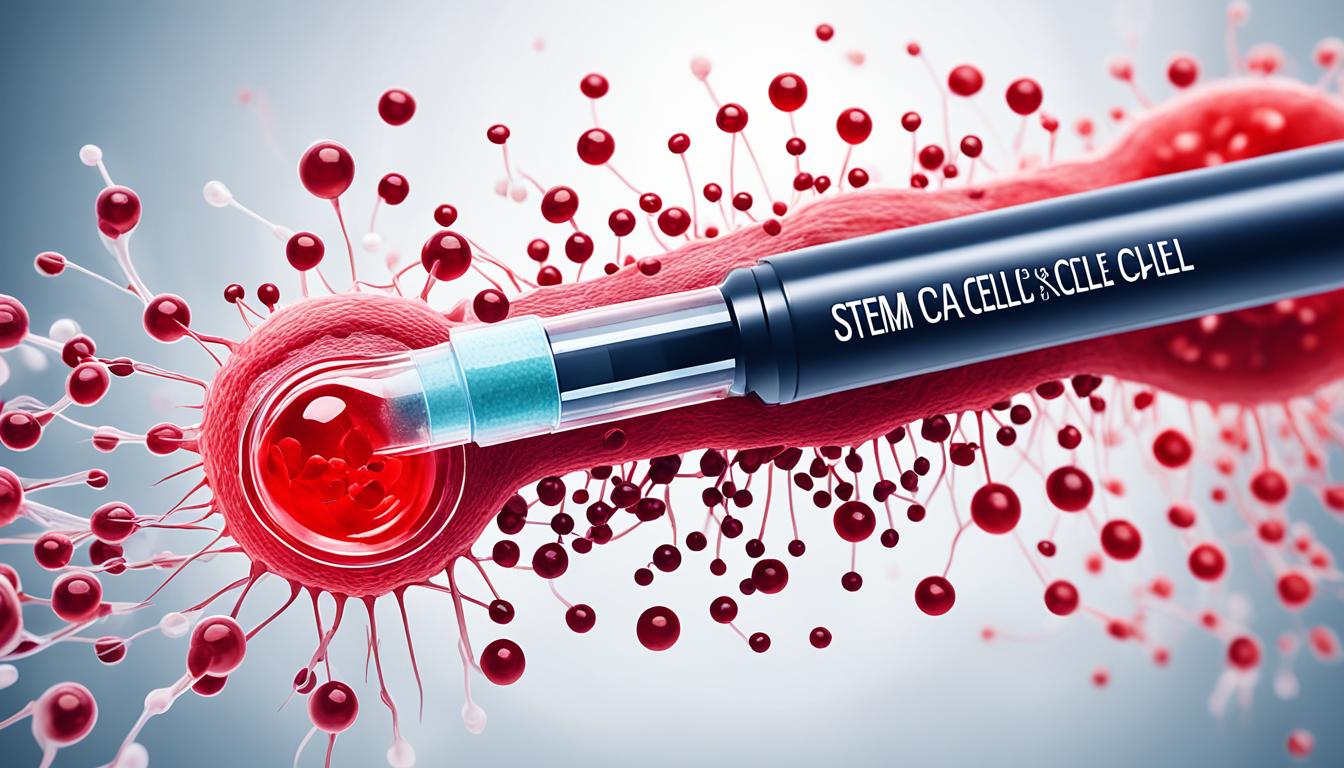Microscopic hematuria means finding red blood cells in the urine, not visible to the naked eye. This issue is often caught during a test of your urine. If there are more than 10,000 red blood cells in a milliliter of urine, it’s called microscopic hematuria. The reasons behind this condition can vary. Some common causes are urinary tract infections, kidney stones, and an enlarged prostate. It can also be linked to glomerulonephritis, genetic disorders, certain medications, and intense exercise.
To diagnose microscopic hematuria, doctors use tests on your urine, imaging tests, and cystoscopy. The choice of treatment depends on what’s causing it. This might include using drugs, having surgery, or treating the specific health issue leading to the hematuria. Some cases have seen success with stem cell therapy. Still, more studies are necessary to fully understand its benefits.
Key Takeaways:
- Microscopic hematuria is the presence of red blood cells in the urine, not visible to the naked eye.
- Common causes of microscopic hematuria include urinary tract infections, kidney stones, enlarged prostate, glomerulonephritis, genetic disorders, medications, and heavy exercise.
- Diagnosis involves urinalysis, diagnostic imaging, and cystoscopy.
- Treatment options depend on the underlying cause and may include medication, surgery, or addressing specific factors contributing to the condition.
- Stem cell therapy shows promise but requires further research.
Causes of Microscopic Hematuria
Microscopic hematuria happens when red blood cells are seen in the urine. It can be caused by several factors. Knowing these causes is key to getting the right diagnosis and treatment.
Urinary Tract Infections
Urinary tract infections (UTIs) are a major cause of this condition. They happen when harmful bacteria get into the bladder and grow. This can cause inflammation and bleeding in the urinary tract, leading to hematuria. UTIs are common in women and may cause frequent urination, a burning feeling, and pain in the lower abdomen.
Kidney Stones and Urinary Stones
Kidney and urinary stones can also be behind microscopic hematuria. These hard formations made of minerals and salts can scratch the urinary tract, causing it to bleed. Doctors usually use imaging tests to find the stones. Treatment might be needed to avoid further problems.
Enlarged Prostate
In older men, an enlarged prostate is a frequent source of microscopic hematuria. The increase in size can block urine flow, leading to bleeding in the urinary tract. This condition, called benign prostatic hyperplasia (BPH), can cause weak urine flow, a need to urinate often, and problems emptying the bladder.
Glomerulonephritis
Glomerulonephritis is a kidney condition where the filters are inflamed. It can cause microscopic hematuria by affecting kidney function. Infections, immune system issues, and some drugs can all lead to this problem.
Genetic Disorders
Genetic disorders like Alport syndrome can make hematuria more likely. Alport syndrome changes how the kidneys work, damaging them over time. If someone in your family has Alport syndrome, you should watch out for signs of hematuria.
Medications and Heavy Exercise
Some drugs can make the urine red, like aspirin and cyclophosphamide. These medications can thin the blood. Also, intense exercise, especially if it’s rough on the body, can lead to hematuria. High-impact sports can sometimes harm the bladder, causing it to bleed.
The causes of microscopic hematuria vary. They include UTIs, kidney stones, an enlarged prostate, glomerulonephritis, genetic issues, certain drugs, and strenuous exercise. Finding the root cause is critical for real treatment and care. In the next section, we’ll look into how microscopic hematuria is diagnosed and treated.
Diagnosis and Treatment of Microscopic Hematuria
The diagnosis starts with a simple test called urinalysis. This test checks if red blood cells are in the urine. It’s the first thing doctors do when they suspect microscopic hematuria. The results give doctors clues about what might be wrong.
Doctors might need more tests to find out why there’s blood in the urine. They might do ultrasounds, CT scans, or MRIs. These tests let them see inside the body. They can find issues that could be causing the bleeding.
Sometimes, doctors suggest a test called cystoscopy. A tiny camera goes into the bladder. This lets doctors look closely at the bladder and urethra. They check for things like tumors or stones.
Once they know what’s causing the blood, they can talk about treatment options. The plan will be based on what’s found and how bad it is.
Antibiotics help if a urinary infection is causing the problem. Hemostatic drugs can stop the bleeding in some cases.
If stones are the issue, surgery might be needed. Doctors can use lithotripsy to break up the stones. Or they might need to do more intense surgeries.
Changing some lifestyle habits can also be important. Doctors might suggest dropping certain medicines. Or they might recommend changes to exercise routines.
Regular check-ups are crucial to see how the treatment is going. It’s key to work closely with your doctor. Together, you can figure out the best treatment plan for you.
Treatment Options for Microscopic Hematuria:
- Antibiotics for urinary tract infections
- Hemostatic drugs for bleeding disorders
- Surgical intervention for bladder or kidney stones
- Lifestyle modifications to address underlying factors
Conclusion
Seeing blood in your urine can be alarming. Causes include infections, kidney stones, or an enlarged prostate. It might also be due to intense exercise, some medicines, or genetics.
Doctors use tests like urinalysis and images to find out what’s wrong. You should always see a healthcare provider for an accurate diagnosis. They can then suggest the best treatment. This might include medication, surgery, or solving the underlying issue.
If you notice blood in your urine or have related symptoms, don’t wait. Getting early help is vital for a good recovery. It can make a big difference in your health and how you feel.

